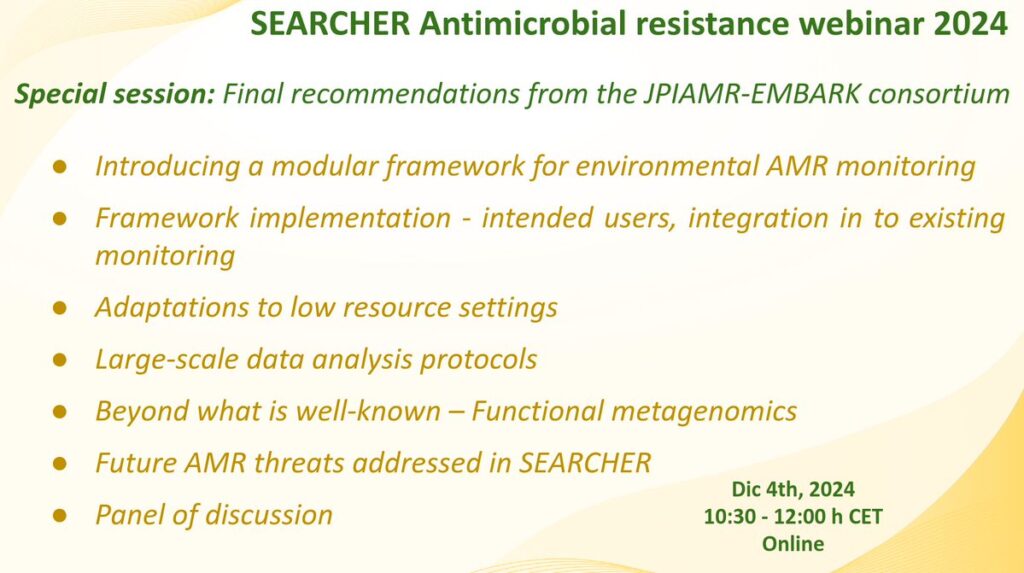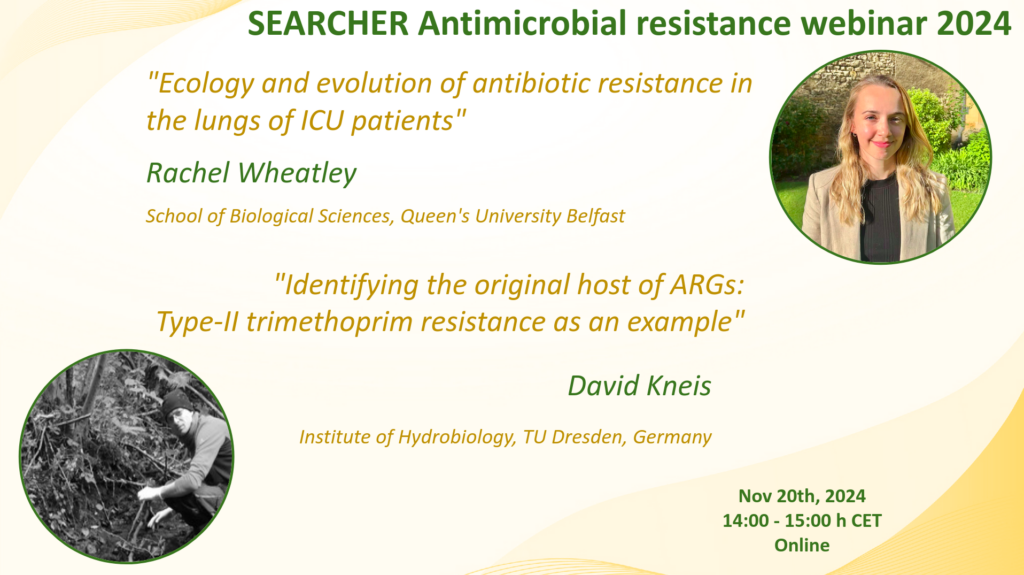Final EMBARK outcomes webinar recording
In case you missed the final EMBARK outcomes webinar, you have a chance to see the full recording on our YouTube channel!
https://youtu.be/MZyvnvfnlSg
The agenda covered the modular framework for monitoring AMR in the environment developed in EMBARK, implementation and adaptation to low-resource settings, suggested molecular and bioinformatics workflows and pipelines, as well as questions and feedback.



